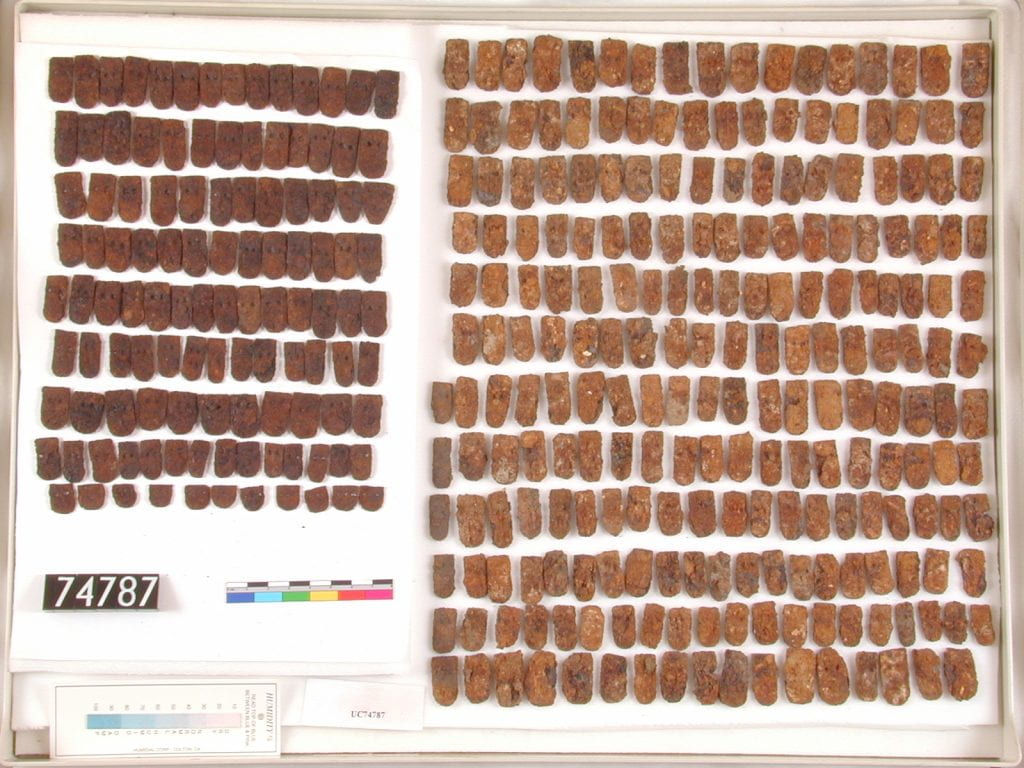Specimen of the Week 392: Hide of the Dragon: Achaemenid Scale Armour
By edwin.wood, on 6 March 2020
Scale armour is a form of defensive garment that is made by attaching small scales to a fabric or leather undergarment in an overlapping pattern. The examples in the Petrie collection are all of metal, either copper alloy (Bronze or Brass) or iron. However, examples of rawhide scales are known from sites in Egypt, notably Tutankhamun’s tomb (Dean 2017). This type of armour is one of the earliest forms to be developed and provides a flexible but effective defence that can be easily repaired if it becomes damaged. The armour is effective against a range of attacks, protecting from projectiles, cuts and blunt force impact. When combined with a stiffened or padded undergarment the protective quality of the armour is increased.
 Close
Close


